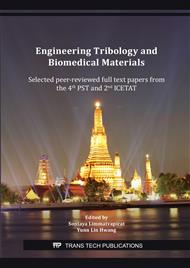p.104
p.111
p.117
p.123
p.129
p.137
p.144
p.153
p.164
Preparation of Nanostructured Lipid Carriers (NLCs) Loading Violacein Extract for Anti-Acne Products
Abstract:
The objective of this research is to evaluate the antimicrobial activity of Nanostructured Lipid Carriers (NLCs) loading violacein extract. The extract was tested for the antimicrobial activities against 3 strains of pathogenic bacteria; namely Cutibacterium acnes ATCC 6919, Staphylococcus aureus ATCC 6538 and Staphylococcus epidermidis ATCC 12228 by agar well diffusion assay. The result indicated that the violacein extract from Chromobacterium violaceum ATCC 12472 has strongest antibacterial effect against C. acnes, S. aureus and S. epidermidis with MIC values in range of 0.0146-0.4688 mg/mL with the lowest MBC value of 0.0146 mg/mL against C. acnes. Violacein extract loaded Nanostructured Lipid Carriers (NLCs) for anti-acne products were prepared by using melt-emulsification technique. The studied factors are the ratio of liquid lipid and solid lipid (LL:SL), surfactant concentration and sonication time. The Ratio of Oleic acid and Compritol® 888 ATO (3:1) with Tween 20 (1.5% w/w) and sonication time of 10 minute (F8 formulation) are an optimizing condition for NLC-Base. The resulted formulations showed the NLC-Base had average particle size of 213.7±2.42 nm with a polydispersity index of 0.239±0.003 and Zeta potential of -26.6±0.45 mV. After that, violacein extract (2% w/w) was loaded into the NLCs (VIO-NLCs). Antibacterial activity of VIO-NLCs 2 % was determined by using agar dilution. The result showed that VIO-NLCs 2 % can inhibit the growth of C. acnes for 60 days during storage. Furthermore, VIO-NLCs 2 % can also act as S. aureus and S. epidermidis inhibitor within 30 days shelf life.
Info:
Periodical:
Pages:
129-136
Citation:
Online since:
October 2021
Price:
Сopyright:
© 2021 Trans Tech Publications Ltd. All Rights Reserved
Share:
Citation:


